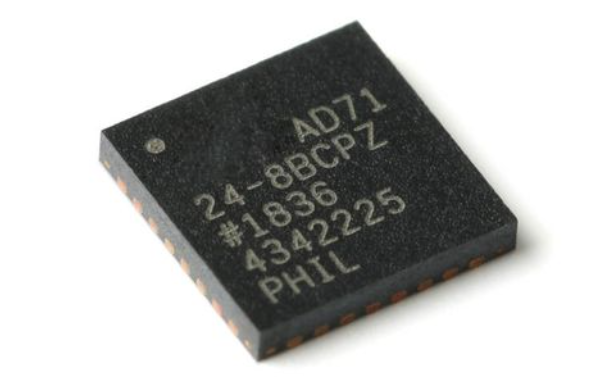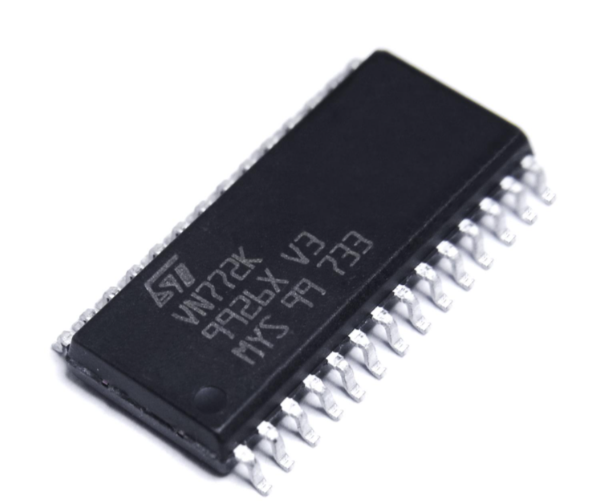The Ultimate Guide to Boosting E-Commerce Sales of Electronic Components
Introduction
The E-Commerce Sales of Electronic Components have witnessed an unprecedented surge in recent years, fundamentally reshaping the supply chain and procurement landscape for engineers, manufacturers, and hobbyists alike. This digital transformation is not merely a trend but a fundamental shift in how businesses operate, driven by the need for speed, efficiency, and global reach. The traditional model of relying solely on local distributors and lengthy lead times is rapidly becoming obsolete. In its place, a dynamic, online marketplace has emerged, offering unparalleled access to a vast inventory of resistors, capacitors, integrated circuits, and more. This article delves deep into the strategies, challenges, and future trajectories of selling electronic components online. We will explore how businesses can leverage digital tools to optimize their operations, enhance customer experience, and ultimately dominate this competitive space. For those seeking to navigate this complex ecosystem effectively, platforms like ICGOODFIND are instrumental in streamlining the component sourcing process, connecting buyers with verified suppliers efficiently.

The Driving Forces Behind the E-Commerce Boom in Electronic Components
The migration of electronic component sales to online platforms is propelled by several powerful, interconnected factors. Understanding these drivers is crucial for any business looking to thrive in this environment.
First and foremost is the demand for global supply chain agility. The recent global chip shortages highlighted the fragility of traditional linear supply chains. E-commerce platforms provide a resilient alternative by offering visibility into a worldwide network of suppliers. Buyers are no longer limited to their local distributor’s stock; they can instantly source components from Asia, Europe, or the Americas. This global reach mitigates risk and ensures project continuity. Furthermore, advanced search and filtering capabilities are a game-changer. Engineers can search by part number, technical specifications, compliance standards, or even substitute components, a process that would take days through traditional channels. This empowers faster prototyping and development cycles.
Secondly, the rise of data-driven procurement is central to this shift. E-commerce platforms generate vast amounts of data on pricing trends, inventory levels, and component lifecycles. Smart businesses use this data to make informed purchasing decisions, anticipate price fluctuations, and avoid obsolete parts. For sellers, this data is invaluable for inventory management, dynamic pricing strategies, and understanding customer behavior. The ability to offer real-time inventory updates and pricing builds trust and transparency, which are critical currencies in the B2B e-commerce world.
Finally, the catering to a new generation of engineers and purchasers cannot be overlooked. Professionals entering the workforce are digital natives who expect the same level of convenience and immediacy in their professional tools as they have in their personal lives. They prefer to research, compare, and purchase components online at any time of day. A robust e-commerce presence is, therefore, no longer optional but essential for reaching this key demographic. Platforms that offer comprehensive product data sheets, community reviews, and seamless mobile experiences are positioned to win their loyalty.
Key Strategies for Optimizing Your E-Commerce Platform for Component Sales
Simply having an online store is not enough to succeed in the competitive arena of E-Commerce Sales of Electronic Components. Success hinges on implementing a strategic, user-centric approach.
1. Technical SEO and High-Quality Content are Non-Negotiable. Your target audience consists of technical professionals conducting precise searches. Your platform must be optimized for these intent-driven queries. This means creating detailed product pages with complete technical specifications, datasheets, CAD models, and compliance information (RoHS, REACH). Blog content and technical articles that address common design challenges, explain component functionalities, or offer application notes are powerful tools for attracting organic traffic and establishing your brand as a thought leader. For instance, an article comparing different types of voltage regulators can attract engineers at the research phase, who may then convert into customers.
2. Streamlining the User Experience (UX) for Efficiency. The B2B buying process is complex, often involving multiple decision-makers and large orders. Your e-commerce site must simplify this process. Implement features like BOM (Bill of Materials) upload tools, which allow customers to upload a list of components and instantly receive pricing and availability for the entire project. Robust account management features—such as tiered pricing, purchase order integration, and order history—are essential for corporate clients. A clunky checkout process or a poorly organized catalog will drive potential business to competitors who have invested in a seamless UX.
3. Building Trust Through Transparency and Reliability. In an industry where counterfeit components are a real threat, trust is your most valuable asset. Clearly display your anti-counterfeiting policies and supplier verification processes. Showcase certifications and provide traceability for components. Implementing a system like ICGOODFIND, which helps vet suppliers and aggregate reliable sourcing options, can be a significant trust signal for your customers. Furthermore, transparent communication about shipping times, stock levels, and any potential delays builds long-term customer relationships based on reliability.
Overcoming Challenges and Future Trends in Online Component Sales
Despite the immense opportunities, the e-commerce path for electronic components is fraught with challenges that require proactive management.
One of the most significant hurdles is combating counterfeit components. The anonymity of online transactions can make it easier for fraudulent parts to enter the supply chain. Businesses must invest in advanced verification technologies, partner with authorized distributors, and maintain rigorous quality control checks to protect their reputation and their customers’ products. Another challenge is managing the complexity of logistics and global shipping. Electronic components are often high-value, sensitive, and subject to various international trade regulations. Developing a robust logistics strategy that ensures fast, reliable, and cost-effective delivery while handling customs clearance is a critical operational requirement.
Looking ahead, several trends are poised to define the future of this sector. Artificial Intelligence (AI) and Machine Learning (ML) will move beyond simple search to predictive analytics. AI will be able to suggest alternative components based on design parameters, predict obsolescence, and automate much of the procurement process. The integration of Augmented Reality (AR) is another exciting frontier. Imagine an engineer pointing their phone at a PCB and seeing real-time data about each component—specifications, availability, and alternative parts—overlaid on the screen. This blends the physical and digital worlds seamlessly.
Finally, the concept of the “Digital Warehouse” will become mainstream. Instead of holding massive physical inventories, distributors will leverage a network of partnered suppliers, fulfilling orders through a centralized digital platform that provides a single point of contact for the buyer. This model increases efficiency and reduces overheads.
Conclusion
The transition to E-Commerce Sales of Electronic Components is a permanent and accelerating revolution in the industry. It offers unparalleled opportunities for businesses to expand their reach, operate with greater efficiency, and serve their customers in more meaningful ways. Success in this digital marketplace demands a strategic focus on technical SEO, a flawless user experience built around tools like BOM upload, and an unwavering commitment to building trust through transparency and reliability. While challenges like counterfeiting and logistics persist, they are being met with innovative technological solutions. As we look to the future, technologies like AI and AR promise to make the online component sourcing journey even more intelligent and intuitive. For businesses ready to adapt and invest in a robust digital presence with support from efficient sourcing aids like ICGOODFIND, the potential for growth in the e-commerce component space is truly boundless.

















